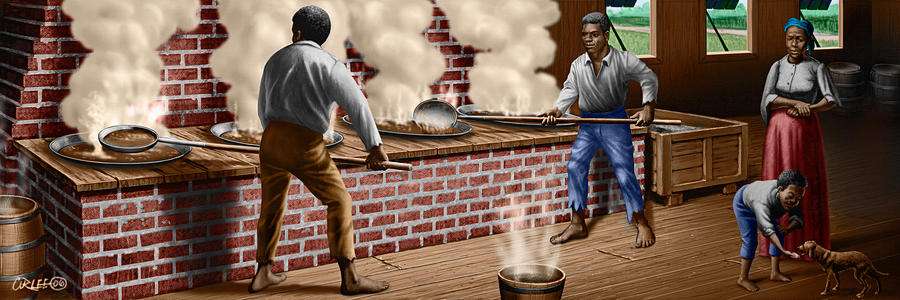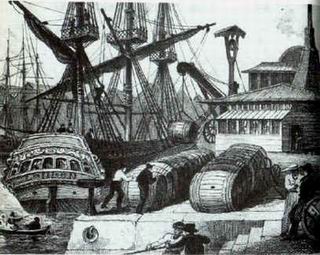
From Live Science article, "How Sugar Changed the World," by Heather Whipps, on 2 June 2008 -- What's not to like about candy, ice cream and all those other sweet treats made with everybody's favorite indulgence, sugar?
Plenty, as it turns out, beyond the way it expands waistlines and causes cavities. It's unlikely that many candy-lovers in the United States think about history while quaffing an estimated 100 pounds of sugar per year, but sweet stuff once played a major role in one of the sourest eras in modern times.
White Gold, as British colonists called it, was the engine of the slave trade that brought millions of Africans to the Americas beginning in the early 16th-century. The history of every nation in the Caribbean, much of South America and parts of the Southern United States was forever shaped by sugar cane plantations started as cash crops by European superpowers.
Profit from the sugar trade was so significant that it may have even helped America achieve independence from Great Britain.

The Trade Triangle
Today more sugar is produced in Brazil than anywhere else in the world even though, ironically, the crop never grew wild in the Americas. Sugar cane — native to Southeast Asia — first made its way to the New World with Christopher Columbus during his 1492 voyage to the Dominican Republic, where it grew well in the tropical environment.
Noting sugar cane's potential as income for the new settlements in the Americas — Europeans were already hooked on sugar coming from the Eastern colonies — Spanish colonizers snipped seeds from Columbus' fields in the Dominican Republic and planted them throughout their burgeoning Caribbean colonies. By the mid 16th-century the Portuguese had brought some to Brazil and, soon after, the sweet cane made its way to British, Dutch and French colonies such as Barbados and Haiti.
It wasn't long, however, before the early settlers realized they were lacking sufficient manpower to plant, harvest and process the backbreaking crop.

The first slave ships arrived in 1505 and continued unabated for more than 300 years. Most came from western Africa, where Portuguese colonies had already established trading outposts for ivory, pepper and other goods. To most of the European merchants, the people they put on cargo ships across the Atlantic — a horrendous voyage known as the Middle Passage — were merely an extension of the trading system already in place.
Sugar slavery was the key component in what historians call The Trade Triangle, a network whereby slaves were sent to work on New World plantations, the product of their labor was sent to a European capital to be sold and other goods were brought to Africa to purchase more slaves.
By the middle of the 19th century, more than 10 million Africans had been forcibly removed to the New World and distributed among the sugar plantations of Brazil and the Caribbean.

Sugar boosts independence
During those three centuries, sugar was by far the most important of the overseas commodities that accounted for a third of Europe's entire economy. As technologies got more efficient and diversified, adding molasses and rum to the plantation byproducts, sugar barons from St. Kitts to Jamaica became enormously wealthy.
The importance of those sugar-rich colonies, especially those belonging to Britain and France, had enormous consequences for the map of the Americas during the 1700s.
Britain lost its 13 American colonies to independence in part because its military was busy protecting its sugar islands, many historians have argued.

As opposed to the slaves working plantations in the U.S. South, Africans on Caribbean sugar plantations (and the islands themselves) outnumbered their European owners by a wide margin. The British planters lived in constant fear of revolt and demanded soldiers for protection. Several decisive battles of the Revolutionary War would have turned out differently had Britain thrown its full might behind the war, experts believe.
Sizable garrisons were also stationed in the West Indies to guard the few sugar holdings Britain had left at the end of the Seven Years' War in 1763. In carving up the Americas after the fighting stopped, King George III had decided to cede a few of his Caribbean sugar islands to France in order to secure a sizable chunk of North America.

How important was sugar cane in that time?
In swapping sweet and profitable Guadeloupe for the barren, sugar-free wasteland of Canada, plus most of the land east of the Mississippi River, many Englishmen thought the King got a raw deal. (source: Live Science )

No comments:
Post a Comment